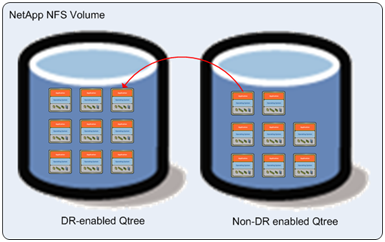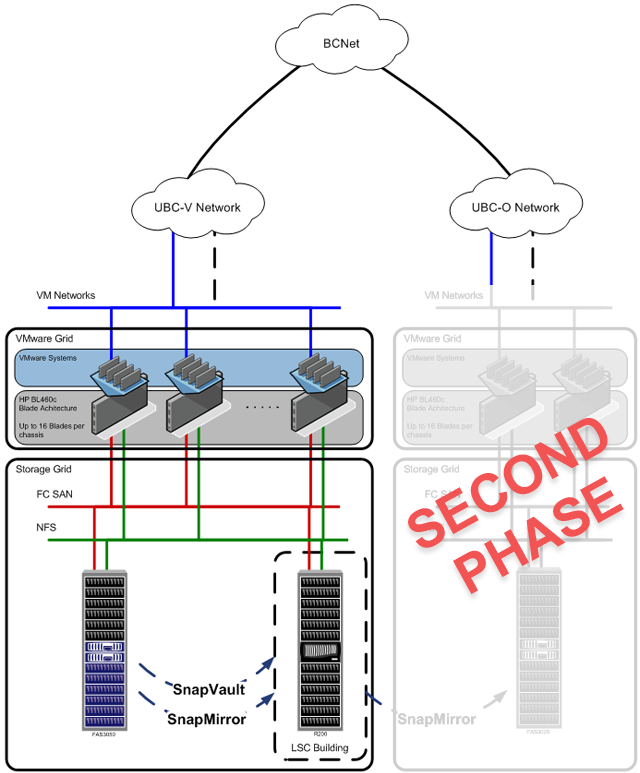Virtual servers (VS) offer a unique advantage when considering Disaster Recovery (DR) options. In traditional data centres with physical servers only, protecting against hardware failure of individual hardware by purchasing duplicate hardware was often too costly. In contrast, very little duplicate hardware is required in a virtual infrastructure. Servers that can be activated, booted and configured to quickly become primary servers are rapidly becoming cost-effective and more manageable disaster recovery solutions.
NetApp SnapMirror is used to replicate those VSs that require DR services to a secondary storage site in BC. All replicated data stays in Canada. Virtualisation Servers can then be used to bring those Virtual Server Instances into service in the event of a disaster.
VSs may be provisioned without the DR services. It is important that when a customer determines a given VS must have DR services enabled, that only a minimal amount of downtime is required to move the VS to the DR-enabled qtree.
The following diagram shows how the VSs are stored on the NetApp volume as well as how changing a VS from a non-DR state to a DR-enabled VS can be accomplished.

Features
Here are some of the benefits of this technology:
- Recovery of a VS from those Snapshots can be done quickly and easily with SnapRestore, which allows the near instantaneous recovery of a disk file for a VS. Regardless of disk file size, recovery takes the same amount of time because of NetApp's unique Snapshot technology. This is best when a VS is completely corrupted and you need to be up and running ASAP.
- In Windows, recovery of a single file within a VMDK disk file may be achieved through the use of a tool called UFSexplorer. More research needs to be done on how the tool works but other NetApp customers have used this tool successfully to recover a deleted file from within a Windows VS. Red Hat Linux and Solaris x86 can use their own utilities to mount a snapshot copy of their VMDK file.
- For Windows VSs using SnapDrive to manage additional storage, recovery can be done with the tools provided by SnapDrive's MMC snap-in. Recovery can be done entirely by you from within the VS with no involvement from IT.
Here is a diagram of the UBC DR architecture including future plans:

